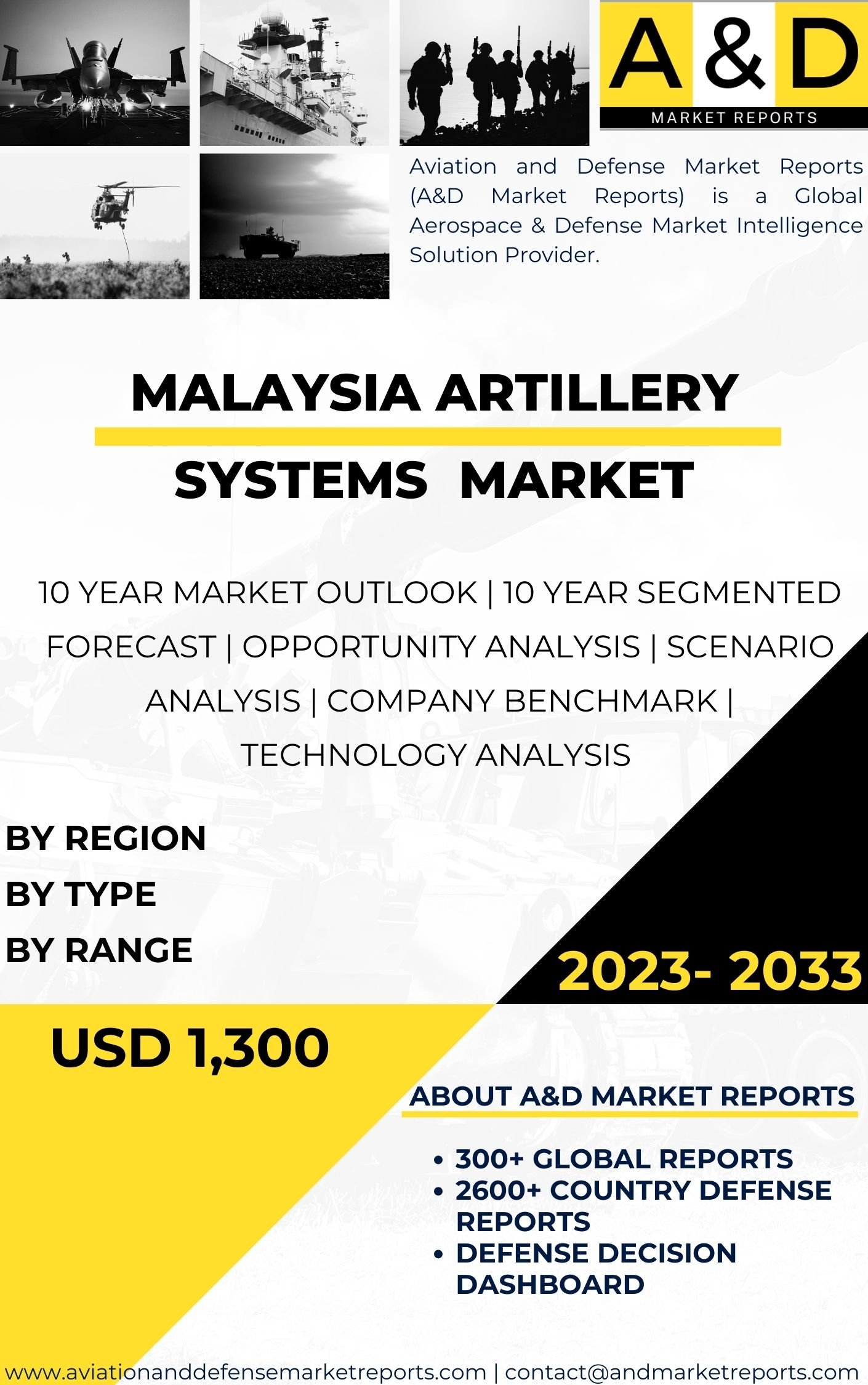Description
As a nation situated in a region with strategic importance, Malaysia recognizes the significance of maintaining a modern and capable artillery arsenal to safeguard its territorial integrity and national security.
The Malaysian artillery systems market encompasses a wide range of platforms, including towed howitzers, self-propelled artillery, rocket launchers, and multiple launch rocket systems (MLRS). These systems play a vital role in supporting ground forces, providing artillery support during military operations, and deterring potential aggressors.
The Malaysian government’s commitment to strengthening its defense capabilities has driven investments in modernizing and upgrading its artillery inventory. Upgrading existing systems and procuring new, advanced artillery platforms have been central to the country’s defense modernization efforts. By doing so, Malaysia seeks to stay abreast of technological advancements, maintain a credible deterrent, and enhance its capacity to respond effectively to security challenges.
Towed howitzers have long been a fundamental component of the Malaysian artillery systems. These versatile artillery pieces are typically towed by vehicles and provide a cost-effective means of delivering indirect fire support. While newer self-propelled artillery systems offer greater mobility and operational flexibility, towed howitzers remain valuable for their ease of deployment and lower logistical requirements.
In recent years, the Malaysian Armed Forces have shown an increasing interest in acquiring self-propelled artillery systems. These platforms combine mobility and firepower, allowing for rapid response and flexible deployment on the battlefield. Self-propelled artillery systems are equipped with advanced targeting and navigation systems, enabling them to operate effectively in various terrains and weather conditions.
Rocket launchers and multiple launch rocket systems (MLRS) also form an essential part of the Malaysian artillery arsenal. These systems offer significant firepower, capable of launching multiple rockets in quick succession, thereby saturating the target area and providing a significant advantage in both offensive and defensive operations. The ability to disperse and concentrate fire rapidly makes MLRS an invaluable asset in countering enemy positions and maintaining battlefield superiority.
A key aspect of the Malaysian artillery systems market is its collaboration with international defense companies. These partnerships have facilitated technology transfer, joint production, and knowledge exchange. By collaborating with global players, Malaysia aims to leverage expertise and acquire state-of-the-art artillery technologies that align with its defense requirements. Such collaborations also foster the growth of the domestic defense industry and contribute to economic development.
Indigenous development and innovation have also played a vital role in the Malaysian artillery systems market. The country’s defense industry has made significant strides in designing, manufacturing, and upgrading various artillery platforms. The Malaysian government actively supports research and development initiatives, encouraging local companies to contribute to the modernization of the nation’s defense capabilities.
Apart from conventional warfare applications, Malaysia recognizes the importance of maintaining versatile and adaptable artillery systems for non-military operations, such as humanitarian assistance and disaster relief (HADR) missions. In such scenarios, artillery systems can provide essential support, delivering aid, and assisting in evacuation efforts, especially in hard-to-reach areas affected by natural disasters or emergencies.
As with any modernization effort, challenges exist in the Malaysian artillery systems market. Ensuring that the defense budget is optimally allocated to procure and maintain these sophisticated systems is a critical consideration. Striking a balance between acquiring new platforms, upgrading existing ones, and investing in training and logistical support is crucial for effective and sustainable defense capabilities.
Additionally, as the security landscape evolves, keeping artillery systems up-to-date with emerging threats and technologies is a continuous process. Ongoing research and development efforts are necessary to enhance the precision, range, and mobility of these systems, ensuring that they remain relevant and effective in future military operations.
In conclusion, the artillery systems market in Malaysia plays a vital role in the country’s defense strategy, providing firepower, mobility, and tactical advantages to the Malaysian Armed Forces. By investing in a diverse array of platforms, collaborating with international partners, and fostering domestic innovation, Malaysia aims to maintain a modern and capable artillery arsenal capable of defending its territorial integrity, deterring potential threats, and contributing to regional security and stability.




